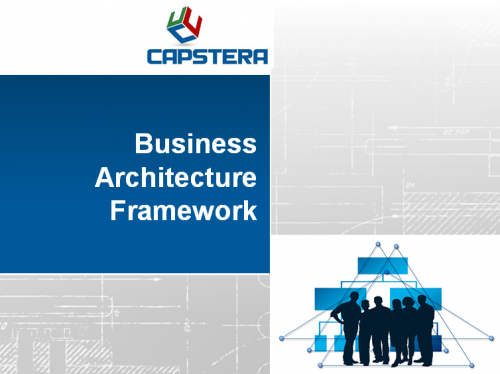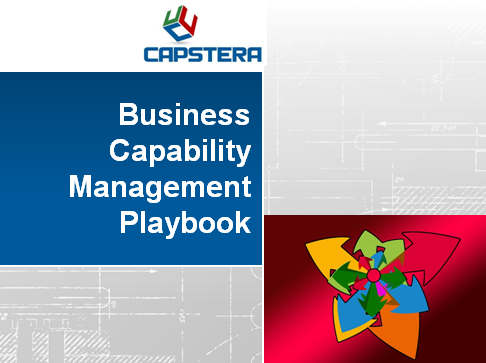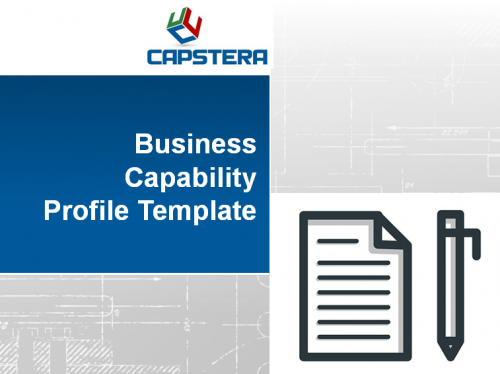
What business architecture deliverables should you consider producing if you are a business architect? At the outset, Capstera’s view is that many business architecture deliverables range from the ivory tower, armchair thinking artifacts to deep-in-the-weeds details. So, what business architecture deliverables should you strive for based on the audience, the context, and the use case?
Before we dive deep into the deliverables, let’s be on the same page with regard to the business architecture definition, the components of the business architecture, and a broad overview of the business architecture.
Business Architecture Deliverables:
At the outset, Capstera’s view is that many business architecture deliverables range from the ivory tower, armchair thinking artifacts to deep-in-the-weeds details. So, what business architecture deliverables should you strive for based on the audience, the context, and the use case?
The range, scope, and depth of the business architecture deliverables depend on various factors, and here is a summary view of what’s needed, when, and in which format. For example, if the business is going thru an M&A, prioritizing business architecture deliverables that cater to the specific need should be the high priority. Similarly, suppose the company is engaged in process reengineering. In that case, it will be prudent to support this endeavor with value streams, link them to underlying processes, and map them to essential business capabilities. Last, but not the least, it is different strokes for different folks regarding what format to use. For example, PowerPoint slides may be the best bet for executives, whereas Visio-type artifacts may be useful for peers such as enterprise and solution architects. Irrespective of the medium used, it is also essential to communicate the value of the business architecture deliverables.
Artifacts and Deliverables needed while setting up the business architecture practice:
Audience: Executives in the firm who will approve and fund the business architecture practice, as well as other stakeholders who will benefit from business architecture deliverables
| Deliverable | Description | Best Practices |
| Business Architecture Value Proposition | Make a compelling case for the value business architecture provides | Focus on business architecture’s outcomes, benefits, and value, not sausage-making. |
| Business Architecture Business Case | A companion to the value prop, the business case provides more in-depth qualitative and quantitative benefits of business architecture. | As John Zachman says, you cannot “cost justify architecture,” and hence don’t try purely on a quantitative basis. Use a combination of qualitative and quantitative, where it makes sense. |
| Business Architecture Framework | Whether you adopt from others or create one independently, a business architecture framework encapsulates the scope, depth, and range of activities, outcomes, and deliverables. | Whatever you do, create one view that is consumable by executives and business stakeholders. If needed, you can go deeper into other use cases. |
| Business Architecture Roles | Roles and responsibilities from the leader of business architecture to the business architect’s role. | Be realistic. It should not read like a puff piece but a pragmatic view of what’s expected and possible. |
| Business Architecture Roadmap | A roadmap on specific maturity steps and the outcomes of implementing business architecture discipline. | If it takes too long, the value will be diminished. |
Business Architecture Deliverables needed during the strategic business architecture phase:
Audience: Executives, enterprise architects, business architecture team members, and consumers of business architecture.
| Deliverable | Description | Best Practices |
| Strategic Context | Use sta, the strategic context of the firm, Strategy Maps, Business Model Canvas, Value Chains, and the like to make it familiar to all audiences. | |
| Business Capabilities Map | A multi-level decomposition of what your business does. | Go beyond wall art, even though the wall art will be useful for a summary view with executives. |
| Value Streams | End-to-end flows aimed at delivering value to a stakeholder | Value streams should be highest-level flows, not deep in the weeds. If needed, you can supplement it with process maps. |
| Structure | Capture the organizational structure, such as roles, locations, business units, etc. | This is not a hierarchy map, even though that may be considered as a part of the exercise. |
| Information | A high-level business information model | Don’t go too deep; your data architects will do the conceptual, physical, and logical models. |
| Systems | An inventory of the systems landscape to juxtapose against capabilities and value streams | No need to reinvent the wheel. Your IT architects may already have the application inventory in a repository. |
Crossmappings to Generate Views and Viewpoints:
Audience: Executives, Enterprise Architects, Business Architects, Solution Architects, Business Analysts, Business Product Managers, Project Managers et al.
| Deliverable | Description | Best Practices |
| Capability to Strategy Mapping | Map capabilities to goals, objectives, and strategy pillars to understand the importance of capabilities in a strategic context. | Use terminology that executives can understand and appreciate. |
| Capability to System/Services Mapping | Provides a footprint of which applications realize what capabilities (using value streams) | Map capabilities at lower levels for better granularity and transparency. |
| Capability to Value Stream Mapping | Which value streams are used to realize the capabilities? | There can be added value if detailed process maps are detailed for each stage of the value stream. |
| Capability Roadmap | While capabilities are an abstraction, a capability-based roadmap of what changes need to be done in Value Streams and Processes and Applications aligned to capabilities will be valuable. | Do this at a feature/function level, not in the weeds detailed requirements. |
Specialized and Situation-based Business Architecture Deliverables:
Audience: It depends on the specific deliverable.
| Deliverable | Description | Best Practices |
| Capability-based Vendor Analysis | Evaluating a vendor system based on a set of cohesive and comprehensive capabilities will yield better comparisons. | Avoid marketing speak by focusing on clearly enunciated capabilities. |
| Capability-based M&A analysis and post-merger integration | Capability maps can be used in M&A situations to map relative strengths of capabilities, overlaps, and redundancies across the acquirer and the target. | Support your M&A teams with pre-built templates. |
| Capability-centric budgets | Showing budget data aligned to capabilities will indicate where the spending is going vis-à-vis the strategic priorities and capability importance. | If funding is not aligned with capabilities, it is challenging to allocate it. |
Building the Business Architecture Deliverables
For the core deliverables – Business Capability Maps and Value Streams – Capstera has blogs that address each individually. For the others, here is a brief tutorial on how to build each business architecture deliverable.
-
Business Architecture Value Proposition
The Business Architecture s document communicates the benefits, costs, and value the business architecture provides to the organization.
To craft this deliverable:
- Outline the objectives of the business architecture and the strategies it supports.
- Identify the benefits for different stakeholders.
- Describe how the architecture will help reduce costs and risks.
- Explain how the architecture supports innovation and future business strategies.
The business case justifies the business architecture, including benefits, costs, risks, and strategic alignment.
To create this deliverable:
- Identify the problem or opportunity the business architecture addresses.
- Propose a solution and describe how the business architecture supports it.
- Detail the costs, benefits, and ROI of implementing the business architecture.
- Discuss the risks and potential mitigation strategies.
- Describe the strategic alignment of the proposed architecture.
-
Business Architecture Framework
The framework is a structured way to document and communicate the business architecture. You can adapt Capstera’s framework or develop one on your own.
To create the framework:
- Identify the critical components of the business architecture (e.g., capabilities, value streams, organizational structure, etc.)
- Develop a standard way to describe and document each component.
- Create a visual representation of the framework.
- Document guidelines for using and maintaining the framework.
-
Business Architecture Roles
This deliverable outlines the roles and responsibilities related to the business architecture.
To generate this information, which the HR teams can use to recruit team members:
- Identify the critical roles in the business architecture (e.g., Business Architect, Business Analyst, etc.).
- Define the responsibilities for each role.
- Outline the necessary skills and experience for each role.
- Detail how the roles interact and collaborate.
-
Business Architecture Roadmap
The roadmap visualizes the planned changes to the business architecture over time.
To create the roadmap:
- Identify the current state of the business architecture.
- Define the desired future state.
- Outline the steps necessary to move from the current state to the future state.
- Visualize these steps in a timeline format.
-
Strategic Context (Interpreting the Corporate Strategy for Operational Realization)
This deliverable translates the organization’s high-level corporate strategy into actionable operational plans.
To create this deliverable:
- Analyze the corporate strategy and identify key strategic goals.
- Identify which business capabilities, processes, or systems support these goals.
- Develop a plan to enhance or develop these capabilities, processes, or systems.
- Align this plan with the business architecture roadmap.
-
Organizational Structure
Business Architects create and use Organizational Structure as a part of understanding the structural underpinnings of the company. This differs from the classic hierarchical organizational chart
To create the Organizational Structure deliverable:
- Start from the decomposition of the company – business units, product lines, clusters of capabilities, and reporting structures.
- Organize this information into visual heatmaps showcasing various attributes.
-
Cross Mappings
Business Architects generate cross mappings to understand the interplay between different organizational elements and to facilitate strategic decision-making. This technique aids in identifying dependencies and impacts across various dimensions of the organization, such as capabilities, strategies, systems, data, and value streams. The outcomes of such mappings can highlight areas of redundancy, reveal gaps, pinpoint misalignments, and demonstrate opportunities for improvement.
Benefits and Insights
- Understanding Dependencies and Relationships: Cross mappings can reveal how different aspects of the business are interlinked and interdependent, helping to understand the broader business ecosystem.
- Strategic Alignment: Mapping capabilities to strategies can ensure the company’s capabilities align with its strategic objectives.
- Efficiency Improvement: Mapping capabilities to systems/services or value streams to systems can help identify redundancies or gaps in systems and processes, leading to cost savings and performance improvement.
- Risk Management: Understanding the linkages between data, capabilities, and systems can help manage risks, such as data breaches or system failures.
- Operational Transparency: Mapping capabilities to data or value streams to data can lead to better data management, providing operational transparency.
- Change Management: Cross mappings help visualize the potential impact of changes in one area on others, which aids in effective change management.
Building Cross Mappings: Step-by-step Guide
- Identify Core Informational Entities: Identify the core entities you need to map. These can include capabilities, strategies, systems, services, data, and value streams.
- Define Purpose: Define the purpose of the cross-mapping. For example, it could identify gaps, manage risks, or improve efficiency.
- Collect Data: Gather all necessary data and information about the entities to be mapped. This could involve interviews, workshops, or reviewing existing documentation.
- Create Initial Mapping: Draw an initial mapping based on the collected data. Use suitable visualization tools that clearly illustrate the relationships between entities.
- Analyze Mapping: Analyze the initial mapping to identify dependencies, gaps, redundancies, or misalignments.
- Refine Mapping: Based on your analysis, refine the cross mapping. This could involve adjusting relationships, adding or removing entities, or changing the visualization.
- Create Views, Viewpoints, and Heatmaps: With your refined mapping, generate views (representations for specific stakeholders), viewpoints (ways of viewing the mapping), and heatmaps (visual displays of data intensity or activity levels).
- Review and Update: Cross mappings are not static. Therefore, they should be periodically reviewed and updated to reflect changes in the business environment.
Remember, these cross-mappings’ ultimate goal is to clarify how different organizational elements interrelate and how they can be optimized to achieve strategic business goals.
Generic Principles of How to Build the Business Architecture Deliverables:
In general, for any of the artifacts you intend to develop, you can follow the five-step process:
- Identification: Identify the current state and the elements involved (e.g., capabilities, systems, value streams, vendors, etc.)
- Analysis: Analyze the current state to identify gaps, redundancies, or areas for improvement.
- Design: Propose a future state that addresses the findings of the analysis.
- Documentation: Document the current, future, and proposed changes clearly and concisely.
- Communication: Communicate the findings, proposals, and roadmaps to relevant stakeholders.
Please consider some of the following products from Capstera.
-

Business Architecture Current State Audit
-

Business Architecture Framework Template
-

Business Capability Management Playbook
-

Business Capability Modeling Overview




